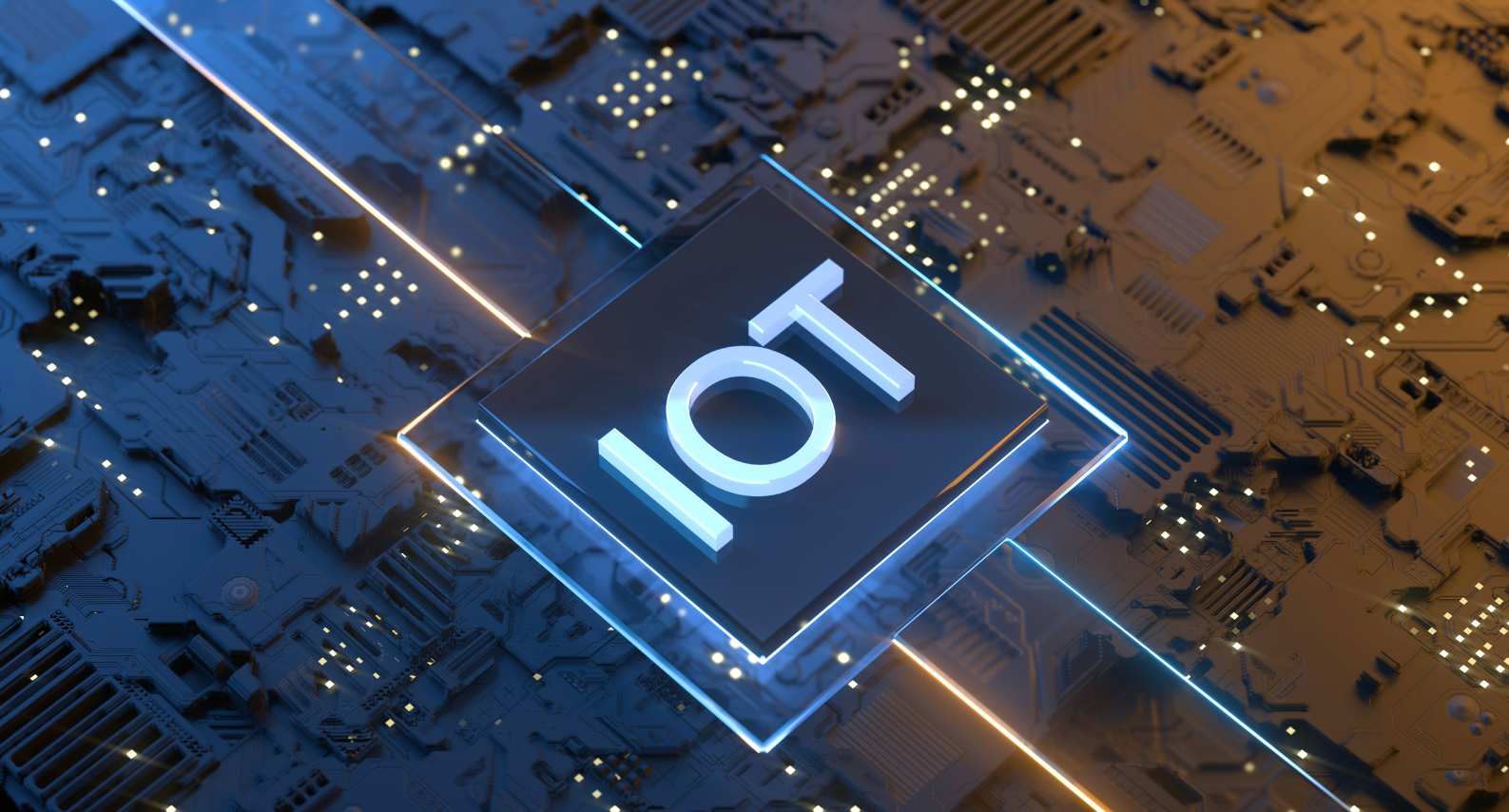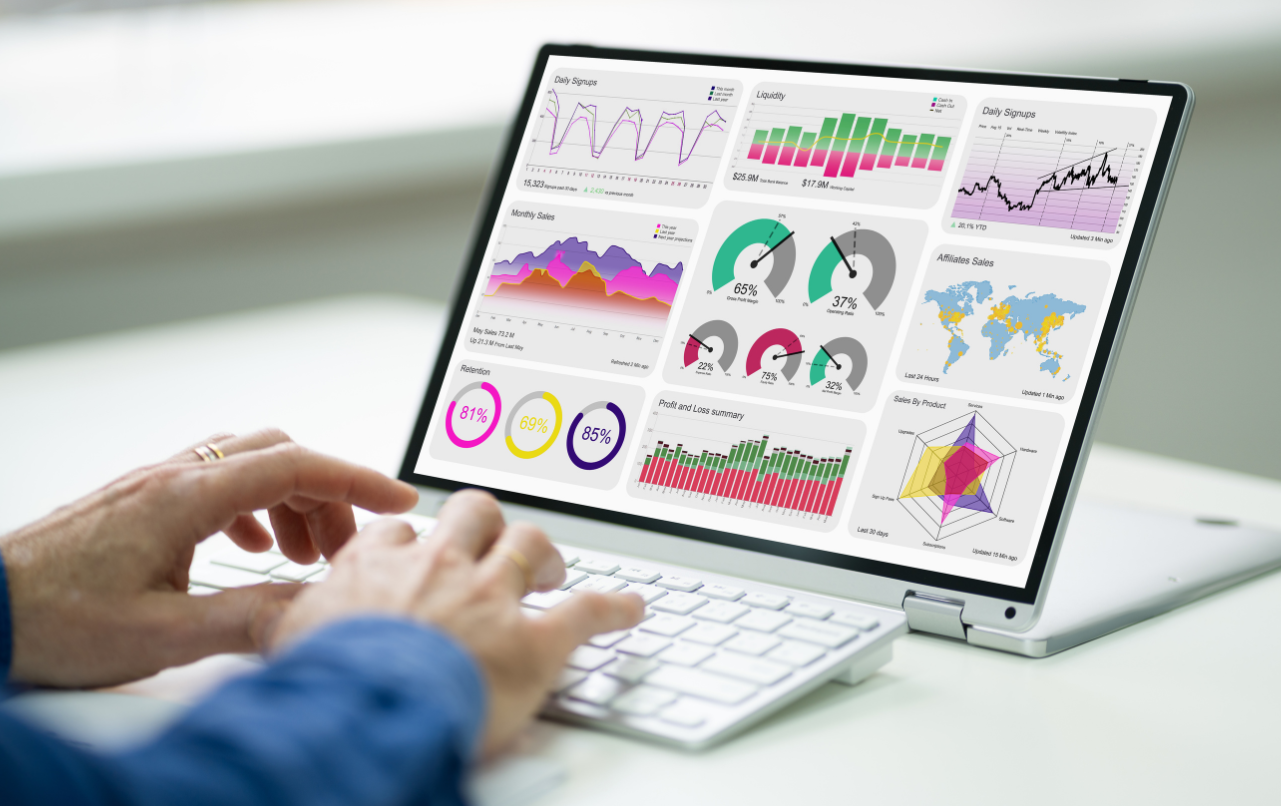The Essence of IoT Device Management (and Why It’s Crucial for Your Needs)
Updated: June 4, 2025
We are undoubtedly in an era of extensive connectivity. Daily, countless devices and sensors are installed in our homes and businesses. By 2030, 29.4 billion devices will be internet-connected to perform specific tasks and gather crucial data for home or enterprise-level applications. But with more Internet of Things (IoT) adoption comes the pressing need to manage these systems. All these connected devices must be regularly monitored for security and updated with patches and extensions. This is the focus of IoT device management.
Yet, to cover all the details, we need more than just this brief explanation. Therefore, we suggest you read this article, drawing from our direct experience in IoT development.

We provide companies with senior tech talent and product development expertise to build world-class software. Let's talk about how we can help you.
Contact usTable of Contents
What is IoT Device Management?
In general terms, managing IoT devices involves a range of methods, instruments, and tech solutions that assist in setting up, overseeing, and preserving connected items (also known as IoT endpoints or edge devices), which are part of both residential and business networks. To carry out these functions, users and managers need to integrate IoT setups with specialized software for managing IoT applications.
These IoT platforms focus on automation and enhanced security, aiming to minimize manual management and scale for numerous devices. By bringing everything under one roof—no matter the type of device, who made it, or where it’s located—these platforms help scale up operations, save time, and boost productivity. Some even reduce the coding expertise needed for managing IoT devices, making administration more accessible.

How Does IoT Device Management Work?
Effective IoT device management hinges on adhering to established standards and practices. Understanding these principles is crucial not just for streamlined decision-making in IoT projects, but also for a comprehensive understanding of a connected device’s performance throughout its entire lifecycle. We should explore every step.
Starting Off: Device Provisioning
The journey begins with provisioning, where devices are configured for the first time, transitioning from their default factory settings to customized configurations that fit seamlessly into your specific network environment.
Secure Introduction: Authentication
Next comes the critical step of authentication, ensuring that each device’s identity is verified as it joins the IoT ecosystem, alongside validating user logins. This step is vital for safeguarding against unauthorized access and protecting sensitive information.
Efficient Onboarding: Bulk Registration
IoT device management platforms often provide the capability for mass registration, greatly streamlining the onboarding process by enabling hundreds or even thousands of devices to be added simultaneously.
Visibility and Management: Device Monitoring
Achieving a bird’s-eye view of all IoT devices is facilitated through a centralized listing, enabling easy search and filter capabilities to quickly locate specific devices.
Adaptive Configuration: Ongoing Adjustments
Given the dynamic nature of devices and networks, IoT device management supports continuous reconfiguration, accommodating updates to firmware, network settings, access permissions, and more.
Organized Scalability: Device Grouping
To manage devices at scale, grouping them based on functionality, location, or other criteria becomes essential, allowing for streamlined updates and management tasks across large numbers of devices.
Proactive Maintenance: Diagnostics
Conducting diagnostics across individual devices or entire networks allows for quick issue identification and resolution for minimizing downtime and maintaining operational efficiency.
Performance Insights: Status Monitoring
Monitoring enables the tracking of device performance on an individual or group basis, with custom notifications for preemptive maintenance actions, enhancing device longevity and security.
Ensuring Safety: Device Security
In the interconnected digital landscape, updating device firmware to patch vulnerabilities is a cornerstone of IoT security, protecting against potential breaches at multiple levels.
Streamlining Updates: Bulk Configuration
The capability to update groups of devices simultaneously ensures uniformity and efficiency, a key advantage in managing extensive IoT ecosystems.
Enhancing Value: Data Integration
The integration of device data across organizational roles—from operations to design and decision-making—maximizes the utility of the IoT infrastructure, facilitating seamless communication with third-party applications.
Concluding the Lifecycle: Device Retirement
Eventually, devices may be replaced due to failure, upgrades, or reaching the end of their service life, with options to either preserve their data for future reference or archive it upon retirement.
Your next read – IoT Architecture Introduction

Importance of IoT Device Management
IoT device management is essential for businesses due to:
- Cost Reduction: It enables early detection of issues and efficient backend processes, cutting expenses and downtime.
- Enhanced Security: Routine updates and monitoring bolster security across all devices.
- Effective Application Management: Ensures only secure, updated applications are used, protecting against malware and optimizing application use.
- Improved Connectivity: Constant monitoring ensures optimal device performance and connectivity.
- Remote Access: Facilitates maintaining devices from afar, saving time and resources for businesses with distributed teams.
But it’s not just about managing the devices themselves. IoT device management software also helps understand the connected world better through:
- Insights: Analyzing data collected by devices helps to uncover patterns and trends, improve decision-making, and optimize operations.
- Automation: Automating routine tasks like device updates or data analysis frees time for more strategic initiatives.
- Scalability: Grants managing many devices efficiently and securely, even as the IoT network expands.
Benefits of Using IoT Device Management
| Benefit | Description |
| Accelerated IoT Device Registration | Expedite the setup, configuration, and deployment of connected devices, facilitating swift network activation. They also smooth the path for future scalability, reducing the time and resources required. |
| Streamlined Device Organization | Allows for the hierarchical grouping and organization of devices, complete with tailored access policies. This streamlines tracking efforts and aligns devices with established business and security protocols. |
| Simplified Remote Device Management | Empowers actions such as software updates, security patches, reboots, and factory resets for IoT fleets remotely. This resolves issues without the need for physical access to the devices. |
| Improved Device Location | Utilizes device attributes to locate individual devices precisely in real-time within extensive networks. This simplifies troubleshooting and retrieval processes, ensuring efficient device management. |
Key Challenges in IoT Device Management
With more IoT adoption comes heightened complications and diverse challenges in managing these systems. What do these entail, and what are the best practices to tackle them? Here are the details.

Diversity in Device Types
IoT devices, varying greatly in form, size, and functionality, demand distinct management approaches. This variety often results in a fragmented and less efficient system. Furthermore, achieving compatibility and seamless interaction among devices from different manufacturers is a significant hurdle in building and maintaining a unified, scalable IoT network.
Rapid Technological Advancements
The IoT world is evolving extremely fast, with new technologies popping up all the time. So, you must ensure regular software and firmware updates crucial for security and performance. Yet managing these updates in a vast IoT network is tough, particularly for smaller organizations with fewer resources.
Remote Management Complexities
Many IoT devices are deployed in remote or hard-to-reach areas, such as industrial sites, power grids, or even remote corners of the globe. Managing these devices presents unique challenges, including:
- Limited or unreliable connectivity: Remote locations may have limited or unreliable network connectivity, making it difficult to establish a stable connection for device management tasks.
- Security concerns: Remote management often involves accessing devices over public networks, increasing the risk of cyberattacks.
- Maintenance and troubleshooting: Troubleshooting and resolving issues with remote devices can be complex and time-consuming, as it often requires physical access to the device or specialized remote diagnostic tools.
Many of these challenges can be addressed with an effective IoT device management platform, ideally one that adheres to widely accepted industry standards.
Your next read – Internet of Things (IoT) Testing: Why Is It So Important?
IoT Device Management Best Practices
In this part, we’re offering advice and actions to boost performance and lock down the security of your IoT network.
Security Concerns
With the vast amount of sensitive data that IoT devices collect and transmit, secure remote management IoT device is paramount. It plays a critical role in protecting IoT devices from cyberattacks, which have become increasingly sophisticated and targeted. By implementing robust security measures, IoT device management can help safeguard sensitive data, prevent unauthorized access, and protect against malware infections.
IoT device management protocols typically employ a variety of security features, including:
- Ensuring that only authorized devices can connect to the IoT network and access data.
- Protecting sensitive data from unauthorized access by encrypting it in transit and at rest.
- Identifying and addressing security vulnerabilities in device firmware and software.
- Enabling secure remote access to devices for monitoring and troubleshooting.
- Promptly responding to security incidents to minimize damage and restore operations.
Device Longevity
IoT devices are designed to operate for several years, but poor management practices can significantly impact their lifespan. IoT DM helps to ensure that devices operate efficiently throughout their lifespan by:
- Deploying firmware and software updates to address bugs, fix security vulnerabilities, and introduce new features.
- Ensuring devices are configured properly to meet changing requirements and optimize performance.
- Monitoring device health and performance to identify and resolve issues early on.
- Performing preventive maintenance tasks to extend device life and prevent downtime.
Scalability and Interoperability
IoT deployments often involve a large number of devices from different manufacturers and operating systems. IoT device management software helps to address the challenges of managing this scale and ensuring interoperability by:
- Providing a centralized platform for managing devices from a single location.
- Ensuring that devices communicate using standardized protocols to facilitate interoperability.
- Tracking devices across the network to identify and troubleshoot issues.
- Segmenting devices into groups based on their function or location to improve security and manageability.
- Automating tasks such as firmware updates and configuration changes to streamline operations.
Discover everything essential about hiring IoT developers.
IoT Device Management Platforms
The IoT device management tools serve as your application’s foundational infrastructure, where you manage devices. While the exact features can differ between platforms, most IoT device management solutions offer the following abilities to organizations:
- Mass registration and deployment of connected devices;
- Categorizing devices into appropriate clusters;
- Cataloging and locating devices within fleets;
- Recording device activities;
- Managing and updating devices remotely;
- Scripting tailored to specific needs;
- Secure tunneling to diagnose and fix problems;
- Customizable dashboards for unified device oversight;
- Data analytics tools for data-driven decisions.

Let’s explore some of the leading names in this space.
IBM Watson IoT Platform
This IoT device management platform blends IBM’s cognitive APIs, intuitive visual dashboards, robust security policies, and resources for developers. What makes Watson unique? It’s the ability to process and understand unstructured data, including videos, images, and even handwritten notes.
Key Features:
- Effortless bulk device onboarding and removal, manageable remotely.
- Reliable device connectivity through MQTT protocol with TLS security.
- Comprehensive data lifecycle management, including data archiving and retirement schedules.
- Secure APIs that link your applications directly to IoT device data.
- Fully managed services hosted in the cloud.
- Advanced risk and security management tools like anomaly detection and usage pattern analysis.
Unique Selling Point: IBM Watson’s IoT platform offers more than just device management – it taps into Watson’s advanced cognitive abilities, unlocking new insights from your IoT data. Additionally, the Quickstart service offers a no-commitment way to try the software by easily adding a device.
AWS IoT Device Management
It is Amazon Web Services’ solution for effortlessly handling connected devices. It’s all about helping you get your devices up and running, keeping them organized, and ensuring they’re functioning as they should, no matter where you are or how many you have.
Key Features:
- Easy bulk device registration, complete with all the necessary details like security policies.
- Smart device groupingб based on various criteria, even allowing automatic categorization.
- Efficient device tracking through indexing and search options.
- Handy device logging features for quick problem-spotting.
- Scheduled updates and automated processes for hassle-free maintenance.
- Secure tunneling feature for in-depth diagnostics, even through firewalls.
Unique Selling Point: AWS IoT Device Management stands out for its flexibility, working with any device and OS. Ideal for any setting, from factories to offices, it allows you to build a vast IoT network independently, thanks to its wide range of services.
Azure IoT Hub
Provided by Microsoft through its Azure cloud service, this platform ranks as the fifth most user-friendly in the IoT device management software list. It enables seamless, codeless communication between IoT devices and the cloud.
Azure IoT device management features include:
- Azure Defender for IoT for robust security and threat monitoring.
- Serverless computing services to ease IoT application development.
- Individual device authentication to prevent unauthorized access.
- Capability to selectively revoke device access for better control.
- Supports creation and deployment of advanced IoT Edge modules, including AI.
Unique Selling Point: The solution stands out with its Azure Stack Hub compatibility, enabling applications to run both in the cloud and on-premises. This flexibility is ideal for Azure users expanding their IoT capabilities. Its serverless computing, Azure Event Grid integration, and on-premise deployment options make it a top choice for advanced application development.
ThingWorx (PTC)
ThingWorx is a cloud-based IoT platform that includes a comprehensive IoT DM solution. It provides a powerful platform for managing IoT devices, data, and applications.
IoT device management software by ThingWorx (PTC):
- Manages the entire device lifecycle, from onboarding to updates.
- Collects, analyzes, and visualizes IoT data.
- Drag-and-drop interface for easy IoT app development.
- Real-time dashboards for monitoring device performance and trends.
- Machine learning for predicting potential issues.
Unique Selling Point:
ThingWorx’s USP lies in its seamless integration capabilities and comprehensive IoT device management approach. It offers a holistic solution that addresses the entire spectrum of IoT needs, from device management to data analysis and application integration, making it a valuable tool for businesses looking to leverage IoT technology to its fullest potential.
Google Cloud IoT Core
This Google offering is a sophisticated remote IoT device management solution that facilitates connection, management, and data processing from various endpoints. It’s a completely overseen service, demanding only slight technical work at the location.
Key features encompass:
- Secure connections using asymmetric key authentication over TLS 1.2.
- Integration with analytics services like Google Data Studio or BigQuery for in-depth insights.
- Customizable identity and access management roles.
- Efficient bulk deployments through REST APIs.
- Offline operation capabilities for environments with limited resources.
- Real-time monitoring and alerts via Stackdriver Monitoring.
Unique Selling Point: The standout of Cloud IoT Core is its ability to build and train Machine Learning models on the cloud, leveraging Google’s advanced technology and partnerships with third-party AI platforms, including TensorFlow. This makes it particularly valuable for enterprises looking to harness AI/ML in their IoT strategies.
Bottom Line
In the process of choosing a management platform for IoT devices, focus on aspects like powerful and versatile APIs, a dashboard that can be customized to your needs, the platform’s functionality in sending specific scripts to devices in the field, efficient grouping and handling of multiple devices, and compatibility with peripheral devices. Alternatively, you can opt to develop a custom IoT device management platform by collaborating with an experienced IoT development team.
If you’re interested in knowing more about how Relevant can help your organization manage and monitor your IoT devices, contact our expert team for a consultation. Our deep expertise in building IoT platforms equips us to aid you during any stage of your IoT project.
Our core services:
Do you want a price estimate for your project?
Do you know that we helped 200+ companies build web/mobile apps and scale dev teams?
Let's talk about your engineering needs.
Write to us











